Buy Tomato Seeds from various brands at DesiKheti:
Buy Advanta Tomato Seeds Online
Buy Ankur Seeds Tomato Seeds Online
Buy Ashoka Seeds Tomato Seeds Online
Buy Bioseed Tomato Seeds Online
Buy Chia Tai Tomato Seeds Online
Buy DuFlora Tomato Seeds Online
Buy East West Tomato Seeds Online
Buy Elite Seeds Tomato Seeds Online
Buy Enza Zaden Tomato Seeds Online
Buy Fito Tomato Seeds Online
Buy HM Clause Tomato Seeds Online
Buy Indo American Seeds Tomato Seeds Online
Buy Indus Seeds Tomato Seeds Online
Buy JK Seeds Tomato Seeds Online
Buy Kalash Tomato Seeds Online
Buy Kanakadhaara Seeds Tomato Seeds Online
Buy Kaveri Seeds Tomato Seeds Online
Buy Known You Tomato Seeds Online
Buy Konico Seeds Tomato Seeds Online
Buy Mahyco Tomato Seeds Online
Buy Max Seeds Tomato Seeds Online
Buy Namdhari Seeds Tomato Seeds Online
Buy Nath Seeds Tomato Seeds Online
Buy Noble Seeds Tomato Seeds Online
Buy Nongwoo Tomato Seeds Online
Buy BASF Nunhems Tomato Seeds Online
Buy Nuziveedu Seeds Tomato Seeds Online
Buy Pahuja Seeds Tomato Seeds Online
Buy Pan Seeds Tomato Seeds Online
Buy PHS Seeds Tomato Seeds Online
Buy Rasi Seeds Tomato Seeds Online
Buy Rijk Zwaan Tomato Seeds Online
Buy Sakata Tomato Seeds Online
Buy Sarpan Seeds Tomato Seeds Online
Buy Seminis Tomato Seeds Online
Buy Sungro Seeds Tomato Seeds Online
Buy Syngenta Tomato Seeds Online
Buy Taiyo Tomato Seeds Online
Buy Takii Seed Tomato Seeds Online
Buy Tokita Tomato Seeds Online
Buy Unisem Tomato Seeds Online
Buy US Agriseeds Tomato Seeds Online
Buy Vagro Seeds Tomato Seeds Online
Buy VNR Tomato Seeds Online
Buy Welcome Seeds Tomato Seeds Online
Tomatoes are a staple vegetable in every kitchen. Various dishes such as salads, soups, pickles, ketchup, purees, and sauces can be prepared with it. Tomatoes were first domesticated in Mexico.
Belief is that the word "Tomato" originated from the terms "Zitomate" or "Xitotamate". These terms mean plants grown for food. The Tomato is known scientifically as Lycopersicon esculentum. It is one of the members of the Solanaceae family.
Earlier, Tomatoes were called "love apples" in England. They were also called "poor man's orange" in India. These names were given because of the high vitamin C content in Tomatoes (15–20 mg per 100g).
Tomatoes, beyond their culinary appeal, are a nutritional powerhouse. Packed with vitamins A and C, they enhance food taste and promote a healthy diet.
Tomatoes contain essential minerals like potassium, iron, magnesium and calcium. It has many health benefits. Due to this, they are integral to a well-rounded diet.
Tomato seeds are also significant because they have a 24% oil content. Margarine is made with Tomato seed oil extract.
China leads the world in tomato production, closely followed by India. In India, Madhya Pradesh is the largest producer of tamaatar, contributing about 14.63% to the nation's total production. Other leading states include Andhra Pradesh, Karnataka, Tamil Nadu, and Odisha.
Climatic Conditions for Growing Tomatoes
Temperature and amount of light significantly impact fruit set, colour, and nutritional value. As a warm-season crop, tomatoes need a lengthy growth season. The optimal temperature range for growth is 21°C to 24°.
Temperatures above 35°C or below 15°C adversely affect plant growth. Temperatures between 15°C and 20°C at night are ideal for the Tamaatar fruit set. Low humidity, dry winds, and high temperatures (around 38°C) can all be detrimental to fruit set.
Soil for Tomato cultivation
From sandy to heavy soils, tomatoes grow well in various soil types. However, the best soil is loamy, fertile, well-drained soil that retains moisture effectively.
Because of its susceptibility to waterlogging, they require well-drained soils. Soil pH range of 6 to 7 is best suitable. For acidic soils (pH 5.0 or lower), liming is advised to bring the pH down to a more manageable level.
Land preparation for Tomato cultivation
A successful crop requires careful land preparation. The field should be ploughed four or five times to break the soil into a fine tilth.
After ploughing, raised beds 80–90 cm wide or trenches and ridges are prepared. Ten tons of well-decomposed farmyard manure (FYM) per acre needs to be applied during the final ploughing. The addition of FYM helps enrich soil fertility.
Propagation and Seeds Resources for Growing Tomatoes
Choosing a Tomato Variety: Based on your unique requirements—such as the reason for planting, the tastes of the local market, the climate, the kind of soil, irrigation capabilities, and the pests and disease incidence in the region —select a variety.
Purchasing Tomato Seeds: Ensure you buy tomato seeds only from reputable and verified vendors. Desikheti provides a wide range of premium tomato seeds readily delivered to your home.
Tomato Seed Rate: Use 60 grams of tomato seeds for one acre.
Treatment of Tomato Seeds: Commercially available hybrid and open-pollinated tomato seeds are usually subjected to chemical treatments before selling. Treat all untreated tomato seeds with 4 grams of Trichoderma viride per kilogram of tomato seeds 24 hours before sowing.
Time of sowing Tomato Seeds
In India, tomatoes can be grown practically all year round, though local planting dates differ. Tomato seeds are sown in November and transplanted in January in North India. In South India, tomato seeds are sown in August. Tomato seed sowing is done in March for summer crops and transplanted in April or May.
Method of Sowing Tomato Seeds
Usually, tamaatar is cultivated through transplanting. In a nursery, tomato seeds are first planted in raised beds.
To improve the soil fertility in the nursery:
- Mix 3 kg of well-decomposed farmyard manure (FYM) per square meter of the nursery bed
- Apply 0.5 kg of balanced NPK (nitrogen, phosphorus, and potassium) fertilizer per bed.
- Before sowing tamaatar seeds, fumigate the beds with 10% formaldehyde and cover them with polythene for 24 hours.
After removing the polythene, Wait four to five days before sowing the tamaatar seeds. Keep a 7.5 cm space between rows when planting tomato seeds in the row method. Straw or polythene should be placed over the beds until the tamaatar seeds germinate. Protect the tomato seedlings from the wind, the sun, and the rain.
Another method is for growers to plant tomato seeds in trays that are 0.8 mm thick and have 98 cells. These trays are to be filled with 1.25 kg of composted coir pith. A 50% shade net is used during cultivation to protect tamaatar seedlings from intense sunshine.
When seedlings are 25 to 30 days old and have grown to a height of 10-15 cm, they are prepared for transplantation. Before transplanting the seedlings in the field, they should be hardened to improve their resilience.
Place the seedlings on ridge-side planting beds or raised beds. Earthing up is done after transplanting to maintain the plant in the centre of the ridge.
The spacing should be 45 to 75 cm between tamaatar plants and 60 to 120 cm between rows for indeterminate varieties and hybrids. It is advised to leave 45 to 60 cm between rows and 30 to 40 cm between plants when growing determinate tomato cultivars. Closer spacing results in early and higher yields in tomato crops. However, closer spacing reduces the size of fruits.
Tomato seeds are sown directly by farmers in some areas. This technique can help lower the danger of damping off disease, bacterial wilt, and root-knot nematodes in tamaatar cultivation.
Nutrient Management in Tomato Cultivation
Adhering to a detailed nutrient management plan is crucial for healthy plants. The type of tomato cultivar and the soil conditions affect the nutrient requirement for crops.
Generally, 75 to 150 kg of NPK (nitrogen, phosphorus, and potassium) per hectare is suggested. The recommended application for F1 hybrid cultivars is 250:250:250 kg NPK/ha.
A basal dose of half of the nitrogen and all of the potassium and phosphorus is administered. Farmers should split the other half of nitrogen into 2 to 3 applications, typically around 30, 45, and 60 days after sowing.
Micronutrients, including zinc (Zn) and boron (B), are also essential for tamaatar farming. Boron decreases fruit cracking and aids in producing fruits with higher vitamin content. Zinc increases the level of ascorbic acid and strengthens the plant's resilience to disease.
Lime must be applied to acidic soils to raise the soil pH. This allows the plants to grow to their full potential.
Irrigation Management for Growing Tomatoes
Tomatoes are drought-tolerant plants. They have deep roots reaching depths of 120 to 150 cm. However, Sufficient moisture is essential for a plant's optimal growth. Water stress during flowering can have a negative effect on the productivity and fruiting.
As soon as the seedlings are transplanted, start irrigation. Light irrigation is applied every three to four days in the summer and every ten to fifteen days in the winter.
Drip irrigation is highly recommended for tamaatar crops. Drip irrigation conserves water more effectively than furrow irrigation.
Intercultural Methods for Tomato Farming
For best growth, tomatoes require regular intercultural activities. To encourage bushier growth in plants, pinch off lateral shoots while keeping enough foliage.
For indeterminate varieties, staking is essential since it strengthens the plants and improves the quality of the fruit. Set up stakes thirty days after sowing tomato seeds, ensuring they are 1 to 1.5 metres high. Cut off side branches as high as 20 cm above the ground to increase airflow and exposure to sunshine.
Weed Management in Tomato Cultivation
Weeds compete with plants for nutrition, which lowers productivity. Keeping the field clear of weeds is crucial, especially when the plants are just starting to grow. To encourage the excellent development of plants, have two to three weddings before the crop flowering stage.
Regular shallow hoeing will maximise yield and effectively control weeds. Frequent shallow cultivation promotes root development, increases soil aeration, and keeps the fields clean.
Avoid deep cultivation to prevent root damage in tamaatar plants and exposure of moist soil to the surface. Mulch can also be used 15 to 20 days after planting to prevent weed growth.
Pest and Disease Management in Tomato Production
Common pests of Tomato
Serpentine leaf miner ( Liriomyza trifolii)
- This parasite's tiny, orange-yellow larvae burrow between plant leaf layers, feeding on chlorophyll.
- Serpentine lines on leaves are one of the observable symptoms.
- If untreated, this pest infestation can cause significant leaf withering and falling.
Tomato fruit borer (Spodoptera litura and Helicoverpa armigera)
- The larvae burrow into tamaatar fruits, making them unfit for sale or ingestion.
- The presence of holes identifies infested fruits - Round holes (from Helicoverpa armigera) and irregular holes (from Spodoptera litura).
Whitefly (Bemisia tabaci)
- Whitefly nymphs and adults feed on leaves, which results in yellowing, drying, and chlorotic patches.
- Honeydew produced by whiteflies causes sooty mold.
- Whiteflies also act as vectors for tomato leaf curl disease.
Root-knot nematode ( Meloidogyne incognita)
- The feeding of root-knot nematodes results in knot-like galls on plant roots.
- These galls obstruct the plant's capacity to take in water and nutrients.
- This infestation results in chlorotic leaves, slowed growth, and reduced yield of tamaatar fruit.
Common Diseases of Tomato
Damping off (Pythium aphanidermatum)
- In India, damping off is a prevalent problem. This disease primarily affects seedlings grown in greenhouses and nurseries.
- Pre-emergence Damping Off: Results in Poor Germination. Nursery gaps occur as tomato seedlings perish before they emerge from the ground.
- Post-emergence Damping Off: Water-soaked, soft, brown lesions appear on the stems of tomato seedlings after they emerge from the soil. The plants may fall over as a result of this illness.
Early blight (Alternaria solani)
- On leaves, early blight appears as concentric rings of dark brown to black dots. These spots merge, and as a result, leaves may dry out and drop.
- Dark spots at the base of the stem can cause Girdling. The spots at branch junctures can cause breakage in plants.
- Fruits may develop dark, sunken spots. Shedding of immature fruits also occurs.
Late Blight (Phytophthora infestans)
- Every portion of the plant above ground is impacted by late blight.
- On leaves, water-soaked lesions with fading green patches spread fast to cover the whole leaf and petiole.
- In humid conditions, leaves acquire white, mildew-like growth and dead patches at the tips and margins.
- Fruits have dark, greasy spots with white fungal growth that cause soft rot and a spongy, foul-smelling interior. In severe situations, the plant may die entirely.
Buckeye Rot (Phytophthora nicotianae var. parasitica)
- This pathogen creates brown, round patches with concentric rings on the blossom end of immature tamaatar.
- Affected fruits generally remain firm until they get secondary diseases, after which they usually shrivel or mummify. Older fruits eventually decay and fall off the plant.
Fusarium Wilt (Fusarium oxysporum f. lycopersici)
- Lower leaves of infected plants droop and turn yellow. The interior stem tissue has browning along its vascular walls.
- Pants will wilt and finally die over time.
- Although the disease can strike tomato plants at any growth stage, young plants are particularly susceptible.
Bacterial wilt (Ralstonia solanacearum)
- Bacterial wilt causes symptoms such as yellowing and wilting of the foliage, stunting of the plant, and, ultimately, the collapse of the tomato plant.
- Lower leaves droop before wilting and vascular browning can be observed in the cross-section of the stem close to the base.
- There might be apparent bacterial oozing when the tomato stem is cut.
- Adventitious roots often form on the stem, and the affected plants ultimately collapse and die.
Mosaic (Tomato Mosaic Virus)
- Infected leaves display a mosaic pattern alternating between light and dark green patches.
- Usually, leaflets are smaller than usual, puckered, and deformed. Leaflets may occasionally have fern-like characteristics.
- On fruits, necrotic sunken lesions can form, and infected ripe tamaatar shows internal necrosis.
Leaf Curl (Tobacco Leaf Curl Virus)
- Tomato plants that are infected show downward curling and crinkling of their leaves, along with a notable loss in size.
- Newly emerging leaves may appear slightly yellow before developing curling symptoms.
- As infected leaves age, they become brittle and leathery.
- Enations are tiny growths that resemble leaves that can develop on the underside of a leaf's midrib.
- Vein-clearing and mottling are other symptoms. Because of their shorter internodes, diseased plants are frequently stunted and can become partially or entirely sterile.
Bronzy Wilt / Tomato Spotted Wilt (Tomato Spotted Wilt Virus)
- Affected leaves become smaller and develop thickened, bronzy veins.
- The leaf surface may exhibit uneven, necrotic patches along with the typical bronzing and necrosis.
- The junction where branches meet the main stem becomes weak and necrotic, causing branches of the plants to bend.
- On tamaatar fruits, pale yellow or yellowish concentric circular rings with mosaic mottling can be observed.
Bacterial Canker (Xanthomonas vesicatoria, Syn. Xanthomonas campestris pv. vesicatoria)
- Early signs of bacterial canker on leaves include tiny, translucent, water-soaked patches that grow into black, greasy, or dark-brown spots encircled by a yellow halo.
- In tomato plants, these spots may result in chlorosis and subsequent defoliation.
- The petiole and stem may develop black cankerous patches.
- Unripe green fruits may develop water-soaked lesions that turn corky and resemble tiny scabs with irregular margins.
Septoria Leaf Spot or Defoliation Disease (Septoria lycopersici)
- On the leaves, stems, and calyxes of tomato plants, there are numerous circular marks with dark brown edges and grey centres.
- These spots may have little black fructifications in the centre.
- Plants that are severely infected may lose their leaves, particularly in the wet season.
Bacterial Leaf Spot (Xanthomonas vesicatoria)
- Tiny, translucent, water-soaked leaf spots expand into black, greasy, or dark-brown spots surrounded by a yellow halo.
- As these spots multiply, they cause chlorosis, leading to defoliation in plants.
- Black cankerous patches may also develop on the petiole and stem.
- On unripe green tamaatar, water-soaked lesions gradually turn corky and resemble tiny scabs with uneven edges.
Harvesting Method in Tomato Farming
The picking stage of a tamaatar depends on the purpose for which the fruits will be used. It also depends on how far they need to be transported.
- Immature: Harvesting occurs before the tomato seeds are fully developed and before the jelly-like substance around the tomato seeds has formed.
- Mature Green: The fruit is fully grown and displays a brown ring around the stem scar. The blossom end is light green, and the tomato seeds are encased in a jelly-like substance.
- Turning or Breaker Stage: Around 25% of the tomato fruit's surface turns pink at the blossom end.
- Pink Stage: Approximately 75% of the fruit's surface is pink.
- Hard Ripe: The tamaatar fruit's whole surface becomes pink or red, but the flesh remains firm.
- Overripe: The Tomato fruit's flesh is fully coloured and soft.
For distant markets,tamaatar are Ideally collected when fully green to guarantee the delivery of tamaatar fruits in good condition. Tomatoes should be at their Hard ripe stage for local markets. Overripe or fully ripe tomatoes should be processed within 24 hours to preserve quality.
Yield
The yield of Tomato depends on various factors. Whereas hybrid types can yield up to 400 quintals per acre, open-pollinated cultivars yield 120 to 200 quintals per acre.
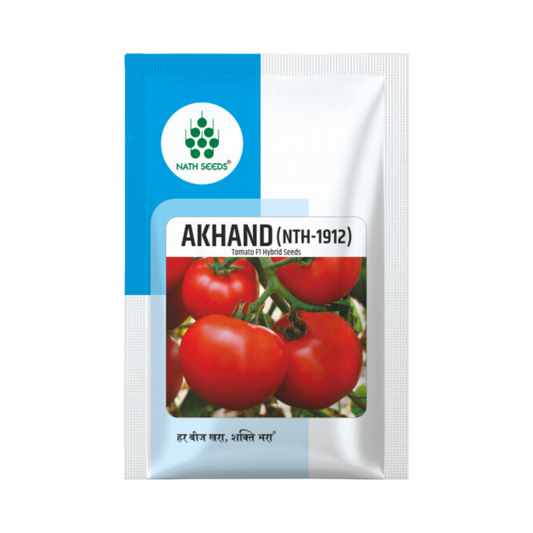 Sold out
Sold out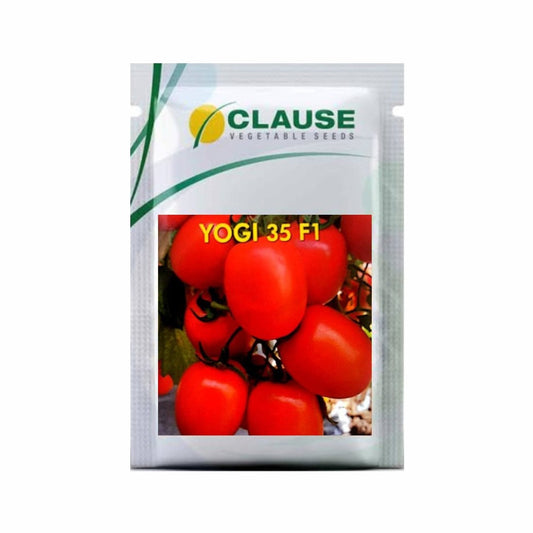 Sold out
Sold out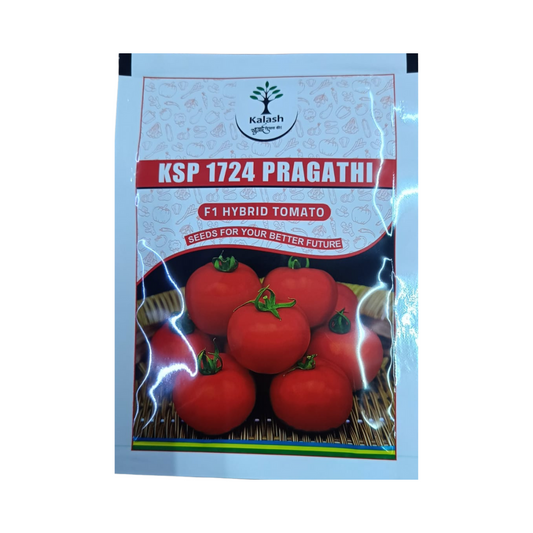

 Sold out
Sold out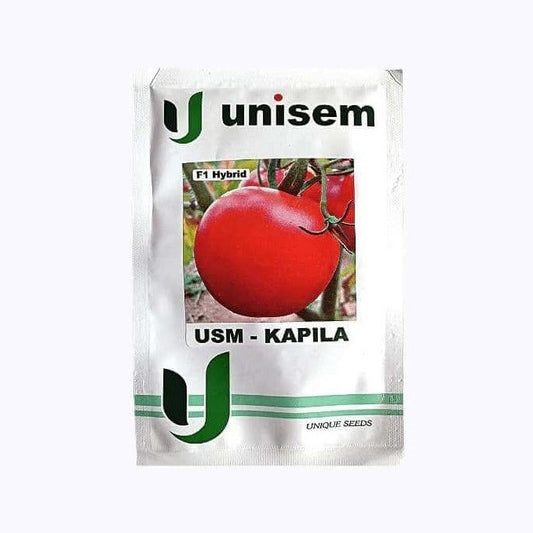 Sold out
Sold out
 Sold out
Sold out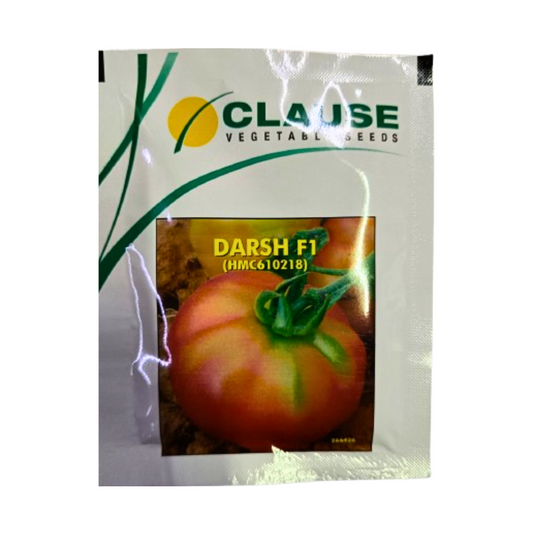
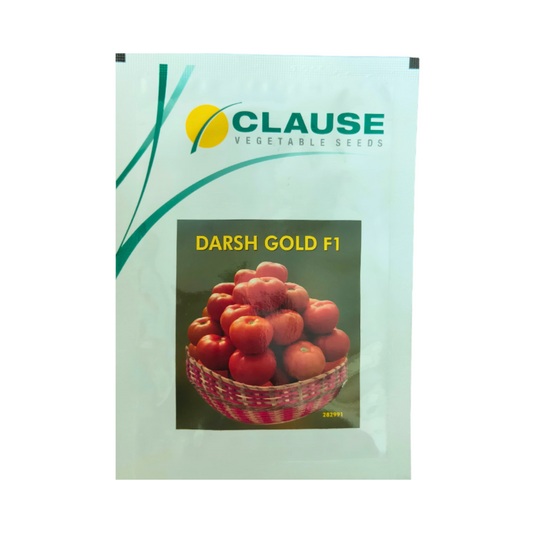
 Sold out
Sold out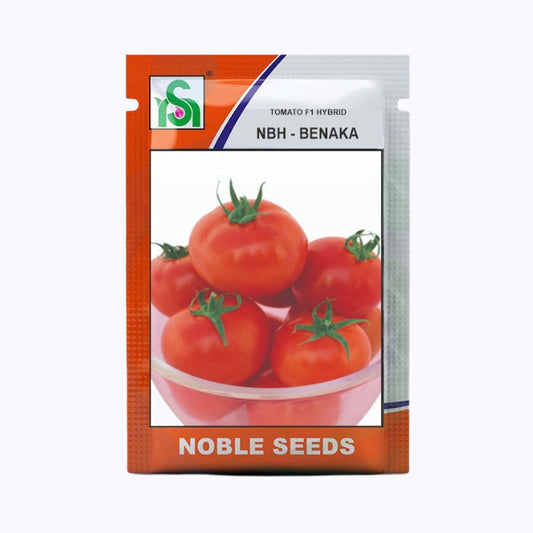 Sold out
Sold out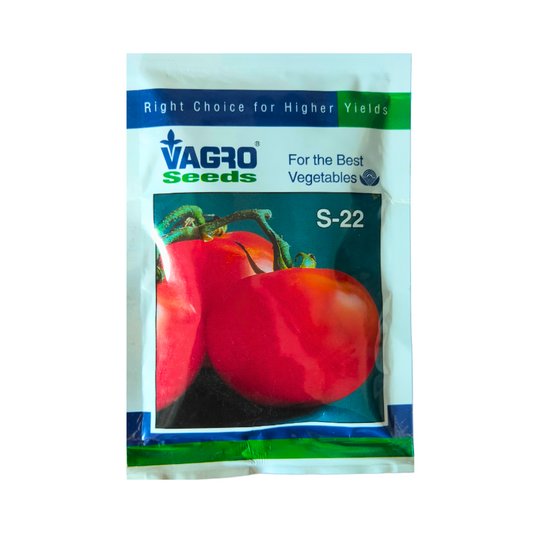 Sold out
Sold out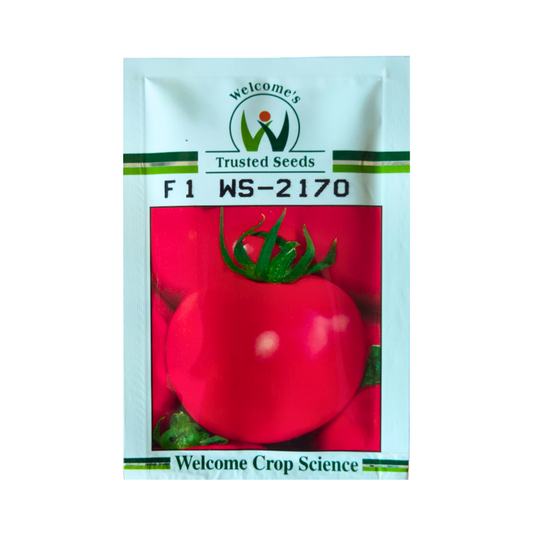 Sold out
Sold out

 Sold out
Sold out Sold out
Sold out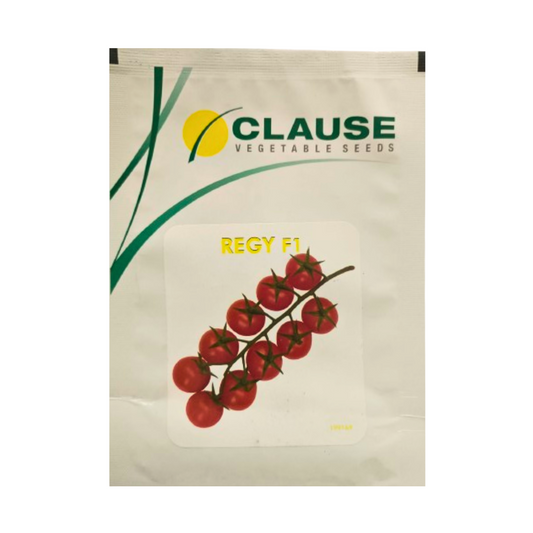
 Sold out
Sold out Sold out
Sold out























